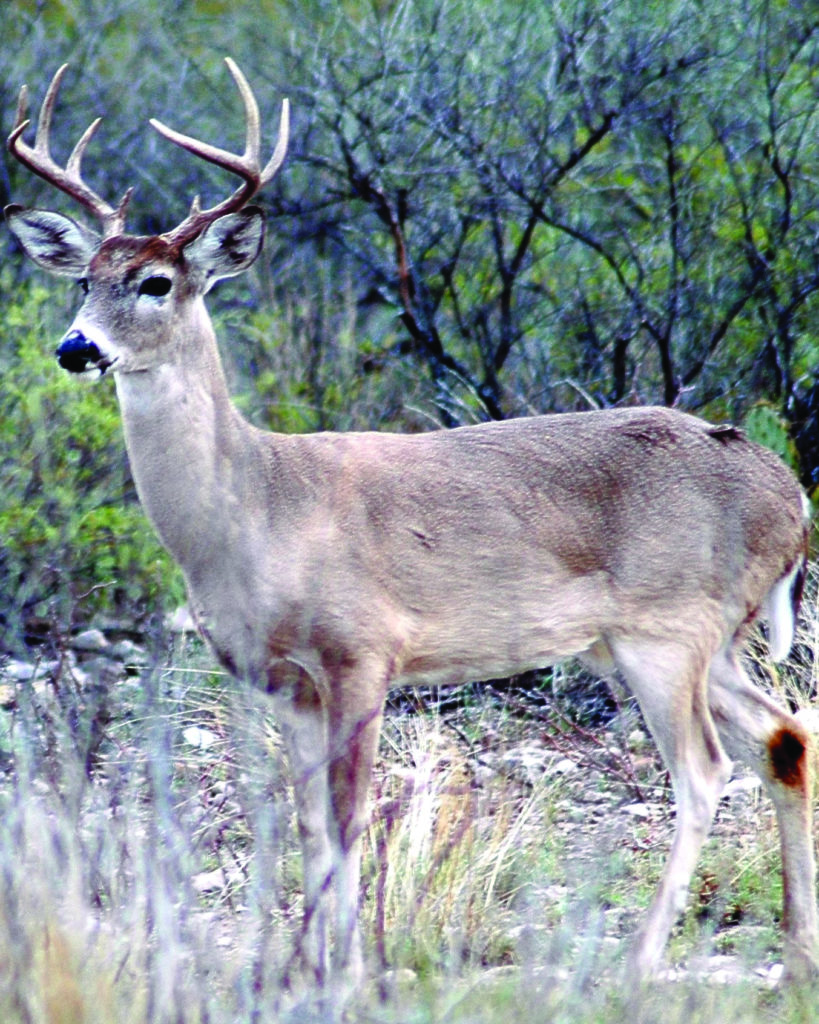The best chance to bag a large white-tailed deer buck typically occurs during the “rut,” or breeding season. During the rut, habitually wily bucks lose a bit of their wariness in their quest to breed with as many does as possible.
“Deer breed at basically the same time every year, regardless of weather, moon phase or whatever,” says Chris Cook, Deer Program coordinator for the Alabama Division of Wildlife and Freshwater Fisheries. “Rut dates, duration, etc. vary very little from year to year.”
In Alabama, the rut doesn’t happen all at once. With few deer in Alabama decades ago, the state brought in whitetails from other states as well as relocated deer from parts of Alabama with whitetails to areas with few or no deer. The deer retained their instinctive rutting timeclock.
“The rut is very spot specific in Alabama,” Cook says. “We have deer rutting from November to early February. Anyone who wants to travel around the state and hunt different ruts can do that all season long. If they put in the time, sportsmen can hunt different public areas around the state during peak rut all season.”

This year, sportsmen should enjoy a very good season throughout Alabama. For the biggest bucks, head to Black Warrior WMA. The largest wildlife management area in the state covers 91,263 acres of Lawrence and Winston counties near Moulton. In addition, the property sits within the 181,230-acre Bankhead National Forest.
“Overall, Alabama now has plenty deer in most counties,” Cook says. “It’s hard to beat Black Warrior WMA for big deer. People who know the area and have hunted it for years generally have great success.”
In that part of the state, the rut usually begins in mid-November and peaks around Thanksgiving. The rut continues into early December. Because the rut begins early in that area, the season in that zone opens earlier than most of the state.
For deer numbers, Cook recommends the Sam R. Murphy, Barbour and Oakmulgee WMAs. Murphy covers 16,372 acres in Lamar and Marion counties near Guin. Barbour sits on 28,214 acres of Barbour and Bullock counties near Clayton. Oakmulgee spreads across 44,500 acres of Bibb, Hale, Perry and Tuscaloosa counties.
“Sam Murphy consistently offers the best opportunities for harvesting deer,” Cook says. “It’s good deer country with varying ages of clear cuts and young pine stands so there’s abundant cover for deer. Barbour has always been a good area for deer. The deer population in Oakmulgee has been trending upward each year. It has some antler restrictions, so it also offers opportunities to potentially kill a big buck.”
Chronic Wasting Disease confirmed in Alabama
Earlier this year, the state confirmed Chronic Wasting Disease, or CWD, for the first time in Alabama deer. Similar to Mad Cow Disease, CWD affects the nervous system in deer and ultimately kills the animal.
“On Jan. 6, 2022, we had our first confirmed Alabama case of CWD in Lauderdale County,” Cook says. “About a month later, we had another positive in Lauderdale County. We knew we’d eventually find CWD in that part of Alabama because of its proximity to areas in Mississippi and Tennessee that both have a high presence of it.”
Hunters killed those two deer about five miles apart near Florence. Colbert County sits just across the Tennessee River from Lauderdale County. The state established a “CWD Management Zone” for those two counties.
“We will be sampling hard again in that area during this hunting season as well as the rest of the state,” Cook says. “We’ll continue to do what we can to try to slow down how rapidly CWD spreads throughout the state. Fortunately, CWD doesn’t spread very fast. We can do things to keep it from spreading faster than it would naturally.”
Hunters can bring deer to various places throughout the state so biologists can test the animals for CWD. A deer exposed to CWD could take months or even years to develop symptoms. Many positive deer look normal at first. As the disease progresses, infected deer stagger around and might drool excessively. They become less wary of people, drink and urinate frequently and look emaciated.
“We need everyone to help us with our CWD sampling efforts to help make sure we have a healthy, viable deer population for the future,” Cook says.
Sportsmen who think they killed or spotted an infected deer should contact the nearest state wildlife office. For more information on CWD see outdooralabama.com/cwd/latest-cwd-information.
John N. Felsher is a professional freelance writer who lives in Semmes, Ala. He also hosts an outdoors tips show for WAVH FM Talk 106.5 radio station in Mobile, Ala. Contact him at j.felsher@hotmail.com or through Facebook.





